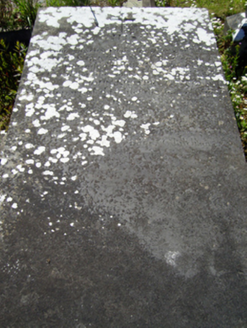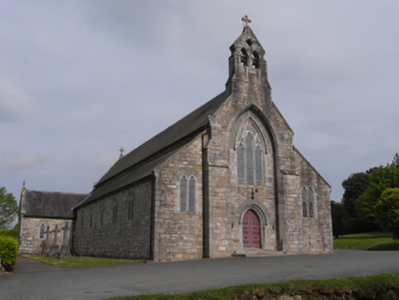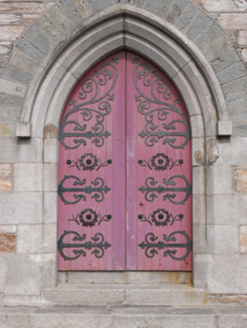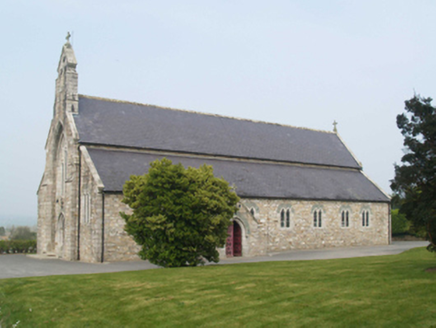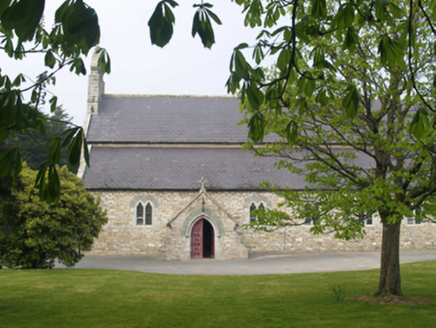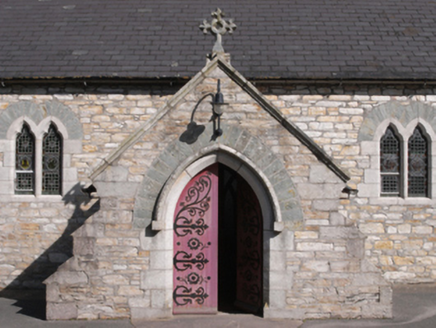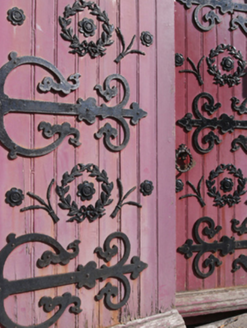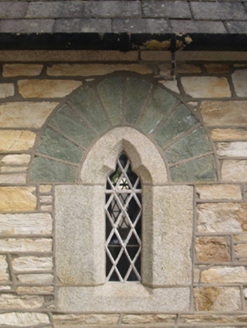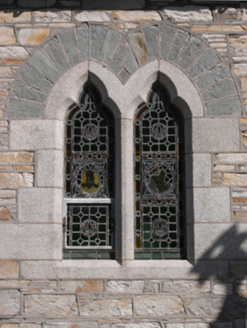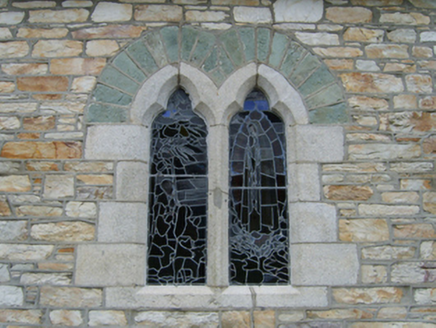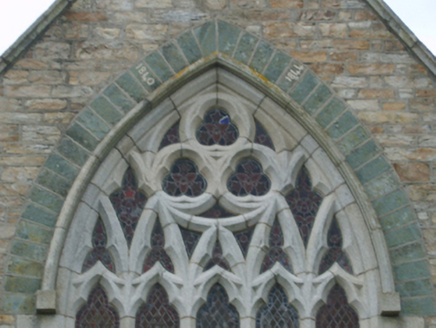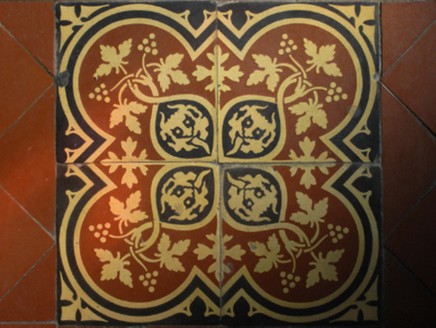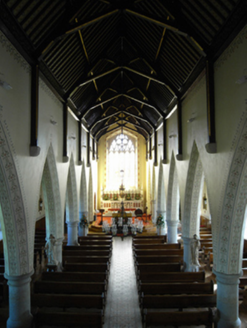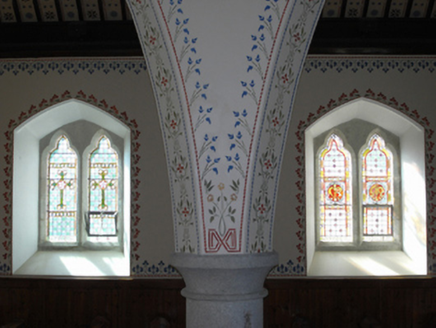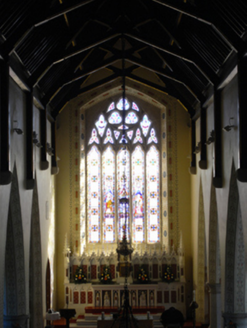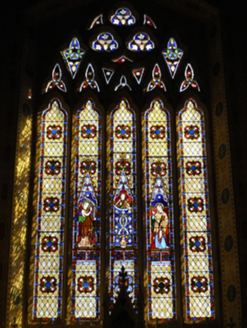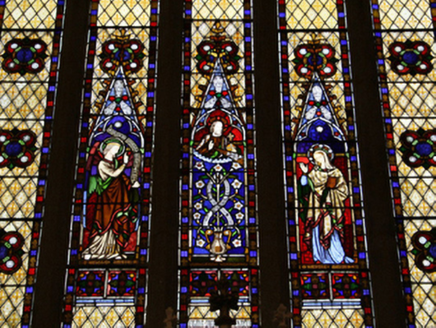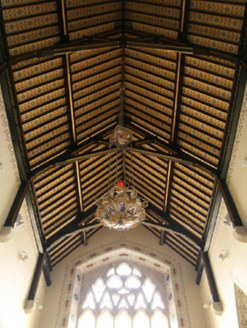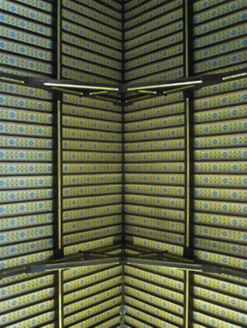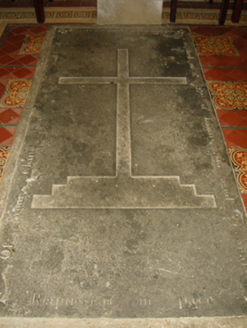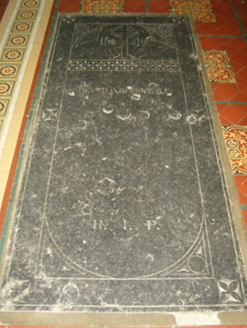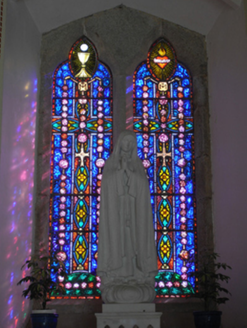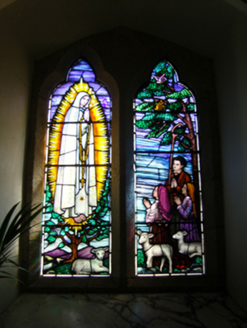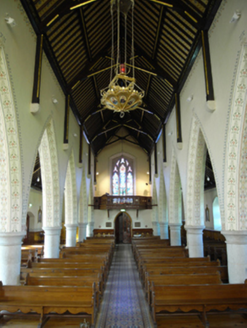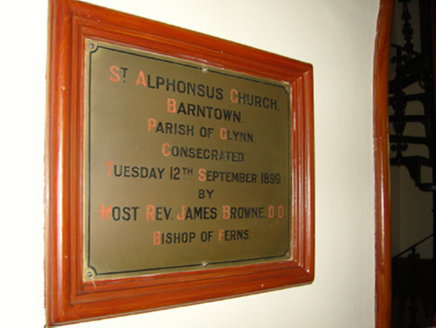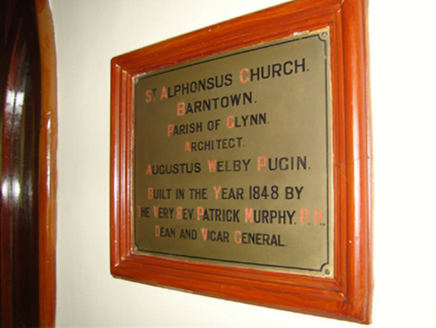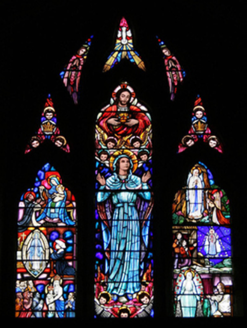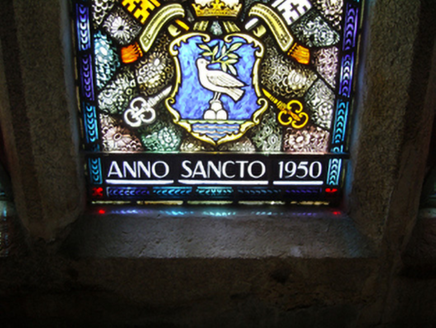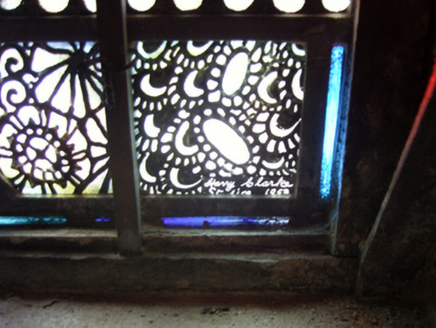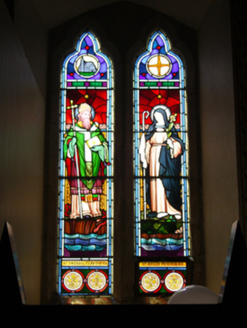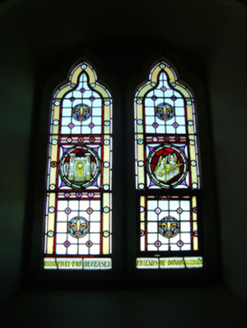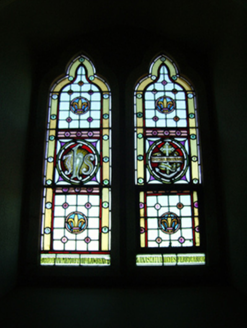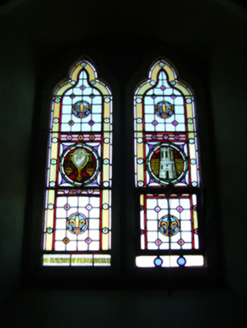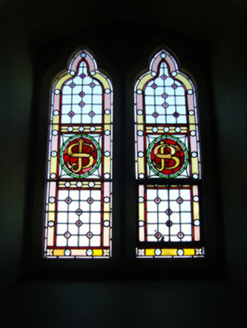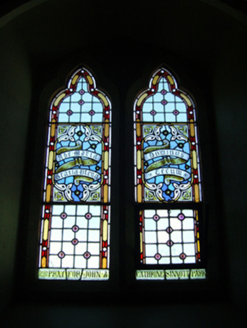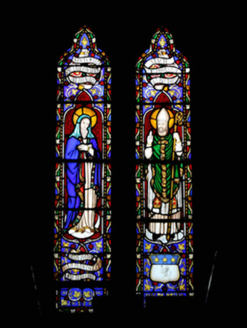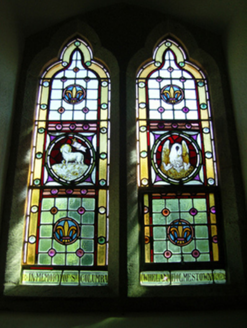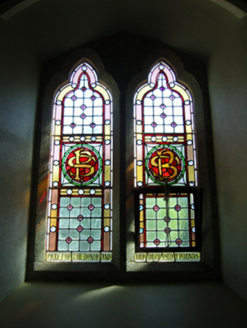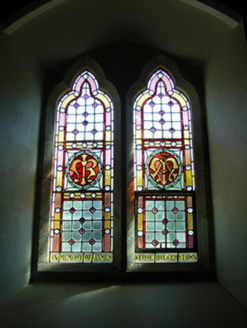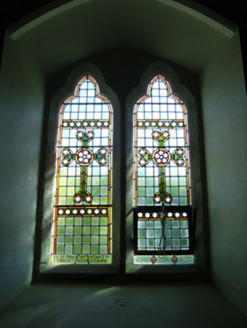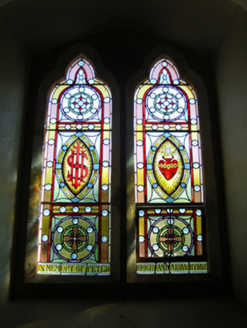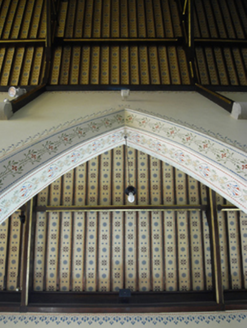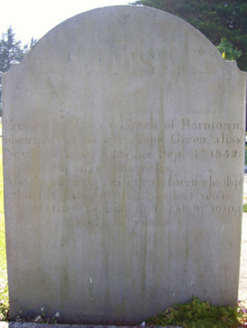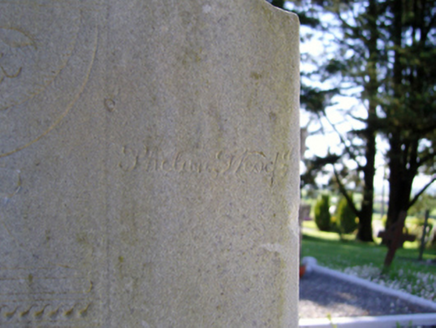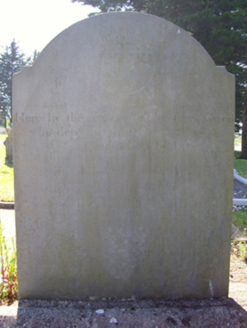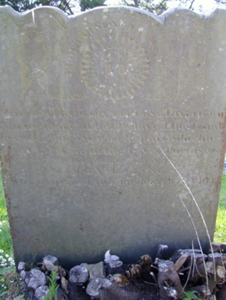Survey Data
Reg No
15703738
Rating
National
Categories of Special Interest
Architectural, Artistic, Historical, Social, Technical
Original Use
Church/chapel
In Use As
Church/chapel
Date
1840 - 1850
Coordinates
299686, 121666
Date Recorded
29/08/2007
Date Updated
--/--/--
Description
Detached seven-bay double-height Catholic church, built 1844-8; dedicated 1851, on a rectangular plan comprising seven-bay double-height nave opening into seven-bay single-storey lean-to side aisles. Renovated, 1898-9, with interior "improved". Consecrated, 1899. Renovated, 1946-8, with interior "improved". Renovated, ----, with sanctuary reordered. "Restored", 1998-9. Pitched slate roof with lean-to slate roofs to side aisles, lichen-covered ridge tiles, cut-granite "Cavetto" coping to gables on cut-granite kneelers including cut-granite "Cavetto" coping to gable to entrance (west) front on trefoil-detailed gabled cut-granite kneelers with granite ashlar buttressed gabled double bellcote to apex framing cast-iron bells, and cast-iron rainwater goods on cut-granite eaves retaining cast-iron downpipes. Part repointed tuck pointed coursed rubble stone battered walls with hammered granite flush quoins to corners; part repointed tuck pointed coursed rubble stone surface finish (east) with stepped buttresses having cut-granite "slated" coping. Cusped or trefoil-headed lancet window openings in bipartite arrangement with cut-granite block-and-start surrounds having chamfered reveals framing fixed-pane fittings having leaded stained glass margins centred on leaded stained glass panels. Pointed-arch window opening to chancel (east), cut-granite block-and-start surround having chamfered reveals with hood moulding over on monolithic label stops framing fixed-pane fittings having leaded stained glass margins centred on leaded stained glass panels. Pointed-arch door opening to entrance (west) front with three cut-granite steps supporting cast-iron bootscrapers, cut-granite block-and-start surround having chamfered rebated reveals with hood moulding over on monolithic label stops framing timber boarded or tongue-and-groove timber panelled double doors. Pointed-arch window opening to gable, cut-granite block-and-start surround having chamfered reveals with hood moulding over on monolithic label stops framing storm glazing over fixed-pane fittings having leaded stained glass panels. Interior including vestibule (west); pointed-arch door opening into nave with glazed timber panelled double doors; full-height interior open into roof "restored", 1998-9, with timber panelled choir gallery on an engaged half-octagonal plan below stained glass "West Window" (1953), encaustic tiled central aisle between timber pews, pointed-arch arcades on cut-granite drum pillars, timber boarded stepped dais to sanctuary (east) reordered, ----, with Gothic-style reredos (1898-9) below stained glass "East Window" (1848), exposed scissor truss timber roof construction on cut-granite beaded corbels with wind braced rafters to stencilled ceiling on timber cornice, timber boarded or tongue-and-groove timber panelled wainscoting to side aisles supporting timber dado rail, Gothic-style timber stations between stained glass memorial windows (----), pair of cut-limestone floor monuments (ob. 1867; 1878), and wind braced rafters to stencilled ceiling on timber cornice. Set in landscaped grounds on a slightly elevated site.
Appraisal
A church erected to a design by Augustus Welby Northmore Pugin (1812-52) representing an important component of the ecclesiastical heritage of County Wexford with the architectural value of the composition, one described as 'the only complete expression in Ireland of one of Pugin's favourite building types…the small village parish church' (O'Donnell 1995, 145), confirmed by such attributes as the rectilinear plan form, aligned along a liturgically-correct axis; the construction in unrefined local fieldstone offset by green limestone or silver-grey granite dressings not only demonstrating good quality workmanship, but also producing a muted polychromatic palette; the slender profile of the coupled openings underpinning a "medieval" Gothic theme with the chancel defined by an elegant "East Window"; and the double bellcote embellishing the roofline as a picturesque eye-catcher in the landscape. Having been well maintained, the elementary form and massing survive intact together with substantial quantities of the historic or original fabric, both to the exterior and to the arcaded interior "restored" (1998-9) by Sheridan and Tierney Architects of Dublin (cf. 15603011) where stained glass signed (1953) by Harry Clarke Stained Glass Studios (closed 1973) of Dublin; contemporary joinery; stencil work; an elaborate reredos; the John Hardman (1811-67)-designed "East Window" donated (1844) by John Hyacinth Talbot MP (1794-1868) of Ballytrent House (see 15704850); and stations painted by Reverend Edward A. Foran OSA (1866-1938), all highlight the considerable artistic potential of the composition: meanwhile, an exposed timber roof construction pinpoints the engineering or technical dexterity of a church making a pleasing visual statement in a sylvan setting.
